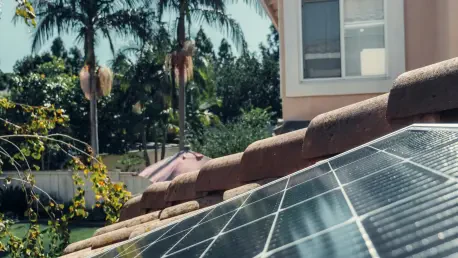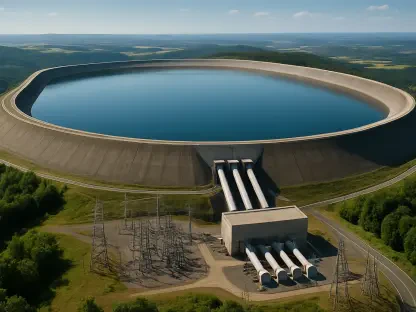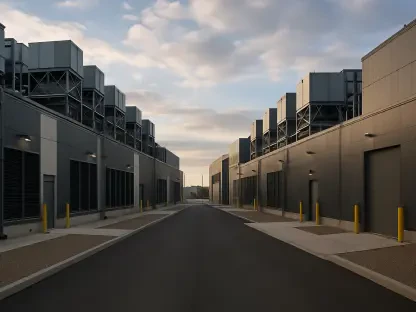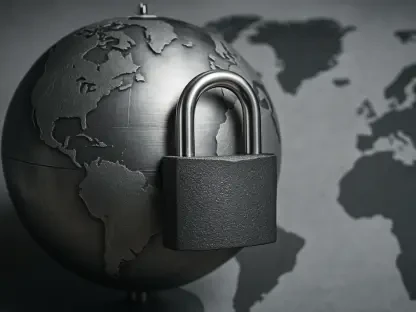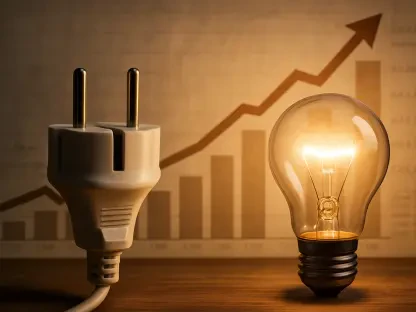In today’s interview, we delve into the significant challenges and advancements in California’s renewable energy landscape with Christopher Hailstone, a seasoned expert with vast experience in energy management and utilities. His insights provide a window into the complex issues surrounding solar and wind energy curtailments, the innovations underway to manage these, and how they shape the future of energy in California.
Can you explain the trend in solar and wind energy curtailment in California and why it increased by 29% in 2024?
The increase in curtailments primarily results from the growing disparity between solar and wind energy production and the actual demand during certain times of the year. In 2024, we observed this 29% rise in curtailments due to these renewable sources often producing more electricity than is needed, especially during times when the demand is low. This is particularly prevalent during cooler months, where the free flow of energy surpasses what the grid demands.
What are the primary reasons for solar energy being the most curtailed in 2024, accounting for 93% of curtailed energy?
Solar energy reached a peak in curtailments because its production tends to be most prolific during the spring months. Moderate temperatures during this time reduce the need for heating and cooling, thus lowering electricity demand. This mismatch between high solar output and low demand means that solar accounts for a significant portion of curtailments, as utilities have to manage the grid’s stability.
How do the moderate spring temperatures in California affect both solar output and electricity demand?
Spring presents this unique scenario where milder weather leads to less energy consumption. People use less electricity for heating and cooling, which typically are two large contributors to overall energy demand. Simultaneously, the conditions are ideal for high solar production, leading to an excess of solar energy that sadly cannot always be fully utilized.
Could you discuss the increase in wind and solar capacity from 2014 to 2024 and its impact on energy curtailment?
In the span of a decade, California has seen a nearly threefold increase in renewable capacity, jumping from 9.7 GW to 28.2 GW. This dramatic rise enhances our renewable energy offerings but also introduces greater complexity in managing the grid. With more renewable capacity, there are more frequent occasions where supply exceeds demand, and without proper outlets for this excess energy, curtailment becomes a necessary measure to maintain grid balance and reliability.
What are the North American Electric Reliability Corp. requirements that California must comply with, and how do these affect the grid’s stability?
Compliance with the NERC requirements ensures the grid remains reliable, secured, and balanced. These regulations mandate a strategic reserve of natural gas generation to accommodate sudden changes in demand and to provide a backup when solar and wind are not available. This is why some renewable energy is curtailed, to make space for quick-response generation sources that can help stabilize the grid during peak times or unexpected demand spikes.
How is CAISO responding to the issue of increased curtailments? Could you elaborate on the measures being implemented?
CAISO has adopted several strategies to mitigate curtailments. These include increased trading of excess energy with neighboring regions, integrating battery storage systems to store surplus power, and planning transmission expansions. The inclusion of these responses in our energy policy helps manage excess renewable energy effectively while supporting grid resilience.
Could you describe how trading with neighboring balancing authorities helps reduce curtailments?
Trading excess energy with neighboring authorities can be an effective way to manage supply and demand discrepancies. When one region generates more electricity than it needs, like what happens in California during high solar output periods, other regions with higher demand can purchase this excess, reducing curtailments and making efficient use of renewable resources at a broader scale.
What role does battery storage play in CAISO’s strategy to manage energy curtailments?
Battery storage acts as a buffer, allowing for the capture and retention of excess energy generated during peak production times. This stored energy can then be dispatched when demand rises, thus alleviating the need for curtailments. Batteries are crucial in maintaining grid flexibility and providing a sustainable way to balance the variations in renewable energy production.
How does the production of hydrogen using excess renewable energy help address the curtailment issue?
Using surplus renewable energy to produce hydrogen is a forward-thinking approach to curtailment. Hydrogen acts as both energy storage and a fuel source. By converting excess energy into hydrogen, we can store it for future use or blend it with natural gas for electricity generation. This not only reduces curtailment but also contributes to cleaner energy production methods.
Can you provide more details on SoHyCal’s initiative to produce green hydrogen and its potential impact on reducing curtailments?
SoHyCal’s project is pioneering in green hydrogen production. By leveraging photovoltaic-generated energy, the initiative aims to produce up to three tons of hydrogen daily. This endeavor could significantly mitigate curtailments by converting surplus solar energy into a storable and transportable commodity, which can be used for various applications like fueling vehicles or electricity generation without emissions.
How does participation in the real-time Western Energy Imbalance Market help CAISO avoid curtailments?
Participation in the WEIM provides a dynamic framework for balancing energy supply and demand in real-time across the Western region. By trading energy within this market, CAISO can efficiently allocate excess renewable energy to areas where it’s needed, hence avoiding unnecessary curtailments. This collaborative approach across states optimizes renewable electricity use and enhances grid stability.
What challenges remain in managing high solar energy production during the spring without more transmission capacity or long-term storage solutions?
The main challenges include limited transmission infrastructure to move excess energy to where it might be utilized more effectively and the current inadequacy of long-term storage solutions to store surpluses for later use. Without addressing these issues, we will continue to see significant seasonal curtailments and underutilization of California’s prolific renewable resources.
Looking ahead, what additional strategies might be employed to tackle energy curtailment in California?
California is exploring several future strategies, including further investment in advanced storage technologies, expanding grid connectivity, and enhancing demand response programs to better match energy consumption with production peaks. Continuous innovation in these areas will be key to successfully minimizing curtailments and maximizing the state’s renewable energy potential.
How do these developments in California compare to renewable energy management in other states or regions?
California’s situation is unique due to its ambitious renewable targets and substantial natural resources. However, other states are also experimenting with similar technologies and strategies, though perhaps not on the same scale. As each region has different resources and energy needs, the specifics of renewable energy management will vary, but California sets a notable example through its integrated and forward-looking approach.
